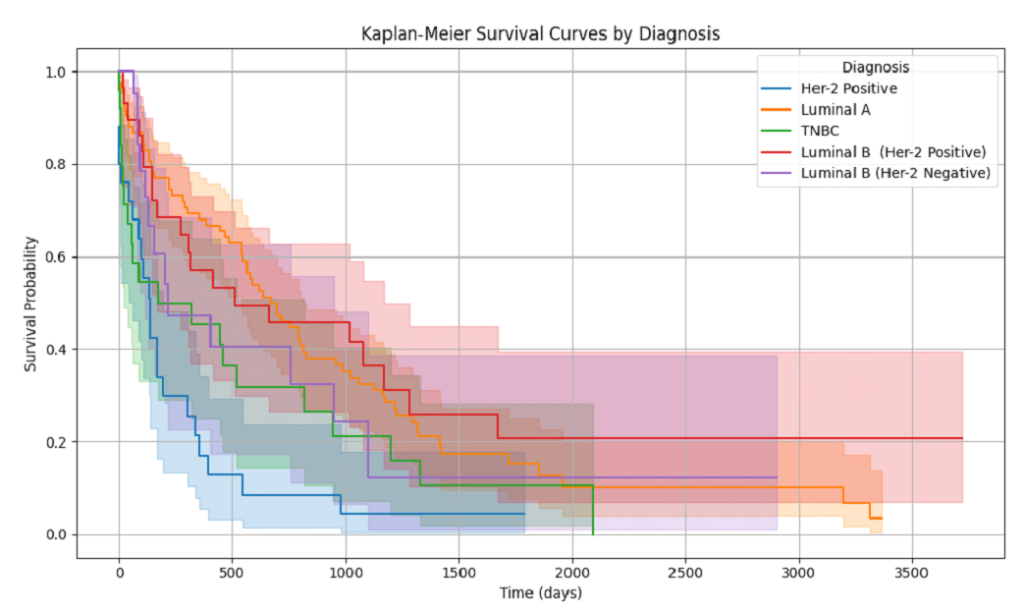Figure: Kaplan-Meier Survival Curves by Diagnosis Group with Survival Probabilities at 30, 90, 180 and 365 Days.
Breast cancer is the most common cancer among women worldwide and poses a significant public health problem, especially in low-income countries and low- and middle-income countries (LMICs) such as Bangladesh, where late diagnosis, limited resources, and inadequate treatment are common.
According to GLOBOCAN, breast cancer accounts for 25% of new cancer cases in women worldwide, with an estimated 2.3 million cases and 685 thousand deaths reported in 2020. While high-income countries benefit from advanced diagnostic and therapeutic technologies, low- and middle-income countries face challenges such as limited knowledge, community culture, and limited oncology resources, leading to poor outcomes.
Due to the high incidence of breast cancer in Bangladesh, the most common treatment modality is mastectomy, while the use of breast implants is limited. This study evaluated the efficacy of standard treatment in Bangladesh in terms of progression-free survival (PFS), overall survival (OS), and specific outcomes.
Luminal A subtypes showed the most favorable prognosis, while triple negative breast cancer (TNBC) and HER2 positive subtypes exhibited the most severe disease and poor outcomes. Kaplan-Meier analysis showed a significantly reduced chance of survival in the first year, highlighting the urgent need for improvements in early detection and treatment.
Closing this gap will require strengthening national health systems, developing advocacy plans, and investing in research and development to improve care and reduce costs. This study highlights the urgent need for interventions within limited resources to address inequalities in cancer management and improve patient outcomes.
